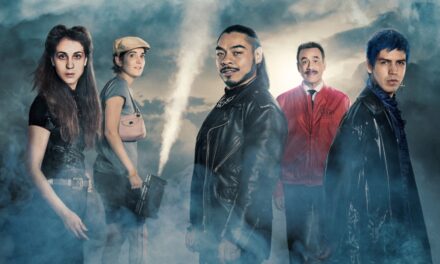We’re fortunate in television studies. The exclusively formal, stylistic, and ideological attention paid to texts in literary studies has never been deemed sufficient in our field—the immensely social nature of TV, like cinema, has largely militated against such reductionism.
Endless moral panics about learning, lust, and lawlessness have meant that technologies, audiences, and regulations have been necessary components of our agenda. While those anxious origins may be rather dubious, their unintended consequences have left us arguably more agile than our colleagues in language departments.
But TV studies seems to be changing. I am concerned that it is becoming less social. Its new best friends are likely to be formalists, aesthetes, littérateurs, and ideologists rather than political economists, ratings mavens, policy wonks, psychologists, and environmentalists.
More and more textual and generic analysis and less and less materialist work is being done. I base this tendentious claim on what I hear and see, rather than anything as credible as a survey. I sense a problematic formation—but it might be a problematic sense of a non-formation. I invite readers who like to decode Donald Rumsfeld to translate for those who don’t.
If my apprehension is justified, how might materialist approaches reassert themselves into this new world in a way that acknowledges the importance of meaning, but undertakes analyses that take their distance from the ideational weightlessness I have criticized?
We need to view TV through twin theoretical prisms. On the one hand, it can be understood as a component of sovereignty, a cultural addition to ideas of patrimony and rights that sits alongside territory, language, history, and schooling. On the other hand, it is a culture industry; it is subject to the rent-seeking practices, exclusionary representational protocols, and environmental destructiveness that characterize liaisons between state and capital. It is, therefore, potentially perennial and ephemeral, especially in an era when the ways it is made, watched, and archived keep multiplying.
My own preference for understanding the meaning of TV texts broadly follows the method of the materialist literary and library historian Roger Chartier.
Chartier establishes the necessarily contingent meanings of texts in three ways:
a) a reconstruction of ‘the diversity of older readings from their sparse and multiple traces’
b) a focus on ‘the text itself, the object that conveys it, and the act that grasps it’; and
c) an identification of ‘the strategies by which authors and publishers tried to impose an orthodoxy or a prescribed reading on the text’ (1989: 157, 161-63, 66).
This grid from cultural history turns away from formalism’s claim that a close reading of sound and image cues can secure a definitive meaning. It also rejects reflectionism, which argues that a text’s key meaning lies in its overt or covert capacity to capture the Zeitgeist, and eschews amateur-hour humanities psychoanalysis or rat-catching sadism (a.k.a. psychology) to unlock what goes on inside spectators’ heads.
Instead (your interlocutor is a man content in his lack of such subtle interiority) I look at the passage of texts through space and time, noting how they accrete and attenuate meanings on their travels as they rub up against, trope, and are themselves troped by other fictional and social texts in the ordinary frottage of life.
To do less is to be neat and tidy, to keep our bottoms as well-wiped as graduate school, tenure, grants, or discipleship demand. But that runs the risk of missing the meanings that accrue to and are lost from television programs across history.
This may be nothing new for you—but to do less is to miss the crucial social circulation that gives meaning to texts and removes it from them.
You can find an example of how I work in a recent piece I was commissioned to write on the controversy swirling around the BBC documentary India’s Daughter.
(VIDEO NO LONGER AVAILABLE)
I endeavored to comprehend this massively difficult topic through the discourses circulating about it and the forms of knowledge made visible through them, along with the forms of thought they militated against. Although it was written for a wide audience in eastern India rather than for TV profs, the column drew on the type of analysis I have tried in the cloisters.
It’s not great, but it’s what I do.
Toby Miller is Emeritus Distinguished Professor at the University of California, Riverside, the Sir Walter Murdoch Professor of Cultural Policy Studies at Murdoch University, Profesor Invitado at the Universidad del Norte, Professor of Journalism, Media and Cultural Studies at Cardiff University/Prifysgol Caerdydd and of the Institute for Media & Creative Industries at Loughborough University in London. He can be contacted at tobym69@icloud.com and his adventures scrutinized at www.tobymiller.org.
WORK CITED
Chartier, Roger. (1989). “Texts, Printing, Readings.” The New Cultural History. Ed. Lynn Hunt. Berkeley: University of California Press. 154-75.



